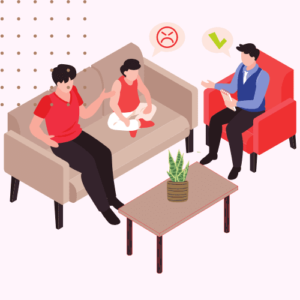
Personal Space Test
Answer these simple questions to understand more about your Personal Space. We share instant results and keep your information confidential.

What is Personal Space Test?
The Personal Space Test is a psychological assessment tool used to measure an individual’s comfort zone or preferred physical distance from others. It typically involves observing how close a person allows others to approach them before feeling discomfort or invading their personal space. This test can provide insights into cultural differences, social anxiety, and interpersonal dynamics. The results help psychologists understand an individual’s boundaries and their sensitivity to personal space, which can be valuable in therapy, social interaction training, or research on human behavior. The Personal Space Test can be conducted through various methods, including questionnaires, simulations, or direct observations.
Who can benefit from this Personal Space Test?
The Personal Space Test can benefit a wide range of individuals across various contexts. Primarily, it is valuable for psychologists and researchers studying interpersonal dynamics and social behavior, allowing them to gain insights into personal space preferences and the impact of cultural, situational, or individual factors. Additionally, educators can use it to understand how personal space affects learning environments and classroom interactions. In the business world, managers and team leaders can apply its findings to enhance workplace dynamics and collaboration. Furthermore, individuals interested in improving their social skills or those working in customer service can benefit from understanding personal space boundaries to create more comfortable interactions. Overall, this test serves as a versatile tool for improving interpersonal relationships and fostering better social understanding.


Personal Space Test Accuracy
The accuracy of a personal space test can vary depending on the specific test used and the conditions in which it is administered. Generally, the accuracy is influenced by factors such as the clarity of test instructions, the reliability of the measuring tools, and the individual’s willingness to comply with the test. In controlled settings, personal space tests can be reasonably accurate, providing insights into an individual’s comfort zone. However, real-world accuracy may be lower due to factors like cultural differences and situational variations. To improve accuracy, it’s essential to use standardized tests and consider the context in which personal space is being assessed.
Types of Assessment to Measure Personal Space Test
Questionnaires and Surveys:
This questionnaire typically presents various social situations and asks respondents to indicate their comfort level or preferred distance in each situation. Questions may involve scenarios like talking to a friend, a stranger, or a supervisor.
Observational Studies:
Researchers or observers can directly measure personal space by recording the physical distance individuals maintain in various social interactions. This approach is less subjective but requires careful data collection.
Virtual Reality (VR) Experiments:
Researchers can use virtual reality technology to create controlled environments where participants interact with avatars or virtual agents. This allows for precise measurement of personal space preferences in a controlled setting.
Psychophysiological Measures:
These assessments involve measuring physiological responses, such as heart rate, skin conductance, or brain activity, to determine discomfort or stress related to personal space violations.
Behavioral Experiments:
Researchers can design experiments to observe how individuals respond to different levels of personal space intrusion. This might involve staged interactions or role-playing scenarios.
Interviews and Focus Groups:
Qualitative methods like interviews and focus groups can provide deeper insights into the reasons behind personal space preferences and how they may vary across individuals and cultures.
Handling Personal Space Test
Handling personal space is an essential aspect of social interaction and respecting others’ boundaries. Here are ten points on how to effectively handle personal space:
- Awareness: Be mindful of personal space boundaries, which can vary between cultures and individuals. Pay attention to non-verbal cues, like body language, to gauge comfort levels.
- Maintain a Respectful Distance: Keep a reasonable physical distance from others in various contexts. For instance, in casual conversation, aim for about an arm’s length apart.
- Ask for Consent: When unsure, it’s perfectly acceptable to politely ask if it’s okay to approach or touch someone, especially in unfamiliar or sensitive situations.
- Adapt to Context: Recognize that personal space needs may change depending on the setting. People might require more space in crowded places or less in intimate situations.
- Respect Cultural Differences: Different cultures have different norms regarding personal space. Be aware of these differences, especially when interacting with people from diverse backgrounds.
- Avoid Unnecessary Touch: Unless it’s appropriate or welcome (e.g., a handshake or a hug between friends), avoid touching others without their consent.
- Step Back When Necessary: If you notice someone stepping back or displaying discomfort, respect their need for more personal space and adjust accordingly.
- Use Non-verbal Cues: Your body language can communicate your intentions. Leaning in can signal engagement, while stepping back can indicate respect for personal space.
- Listen Actively: When engaging in a conversation, focus on the other person’s words and feelings rather than invading their personal space. This shows respect and attentiveness.
- Teach and Model: Encourage others to understand and respect personal space as well. By setting a good example, you can contribute to a more considerate and harmonious social environment.
Handling personal space with sensitivity and respect is crucial for building positive relationships and maintaining social etiquette.